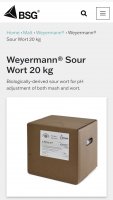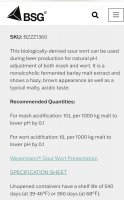Dear Mrs Sammy,
I hope this finds you well. I am writing to you on behalf of the international homebrewing community. We all depend on the insight provided by the man that you are so lucky to have by your side.
So while at times it may _seem_ as if he was merely wasting time on the internet, getting into pointless arguments with strangers, mostly overweight middle-aged men with a considerable drinking problem, he is in fact one of the most prolific members of a distinguished community of experts, many of which look up to him.
I am telling you this to further your understanding of his pivotal position. He should be freed from most, if not all, chores of the household, so he can dedicate his energy to his true calling: educating the public.
You should be proud to have scored such a fine specimen of a man.
Sincerely yours,
Some dude on the internet



















![Craft A Brew - Safale S-04 Dry Yeast - Fermentis - English Ale Dry Yeast - For English and American Ales and Hard Apple Ciders - Ingredients for Home Brewing - Beer Making Supplies - [1 Pack]](https://m.media-amazon.com/images/I/41fVGNh6JfL._SL500_.jpg)









































